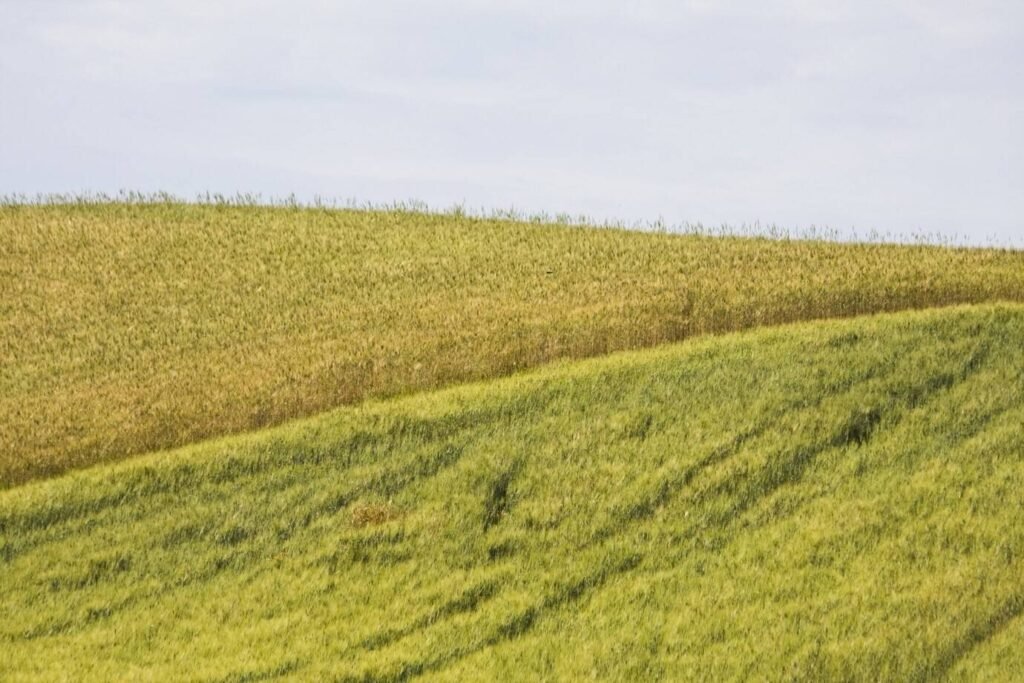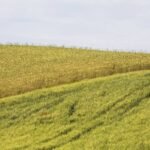In an era when sustainable agriculture is more crucial than ever, innovative conservation practices are gaining traction across America’s heartland. Among these, prairie strips have proven to be a powerful yet simple tool for restoring ecological balance to farmland. By reintegrating native plant species into working fields, farmers are discovering new ways to combat environmental degradation without sacrificing productivity. This forward-thinking approach harnesses the resilience of prairie ecosystems to address one of agriculture’s most pressing challenges: soil erosion.
Backed by rigorous research and real-world success stories, prairie strips offer a scalable, cost-effective strategy that blends traditional land stewardship with modern ecological science. Their benefits extend beyond the soil—supporting wildlife, enhancing water quality, and even sequestering carbon. As more growers adopt this practice, prairie strips are redefining what it means to farm with nature, not against it. This article looks into how these strips function and why their impact is being celebrated as nothing short of transformative.

What Are Prairie Strips?
Prairie strips are narrow bands of native grasses and wildflowers planted within or along the edges of agricultural fields. Unlike traditional buffer strips, prairie strips are composed of a diverse mix of deep-rooted perennial plants native to the region. These strips are strategically placed to intercept water runoff, reduce soil erosion, and provide habitat for wildlife.
The concept is straightforward: by converting a small portion of cropland, typically around 10%, into native prairie vegetation, farmers can achieve significant environmental benefits without sacrificing much productive land. These strips are often placed on contours, foot slopes, or other areas prone to erosion and runoff.
Historical Context
The idea of integrating prairie vegetation into croplands originated from research conducted by Iowa State University’s STRIPS (Science-based Trials of Rowcrops Integrated with Prairie Strips) project. Launched in the early 2000s, the STRIPS project aimed to explore how incorporating native prairie plants into row-cropped fields could mitigate environmental challenges such as soil erosion, nutrient runoff, and biodiversity loss.
Initial trials were conducted at the Neal Smith National Wildlife Refuge in Jasper County, Iowa. The results were promising: even small areas of prairie vegetation within crop fields led to substantial reductions in soil and nutrient loss, as well as increases in wildlife diversity. These findings spurred further research and on-farm trials across the Midwest, demonstrating the scalability and effectiveness of prairie strips as a conservation practice.
The Science Behind Soil Erosion Reduction
Soil erosion is a significant concern in agricultural landscapes, leading to the loss of fertile topsoil, reduced crop yields, and water quality degradation. Prairie strips combat soil erosion through several mechanisms:
- Vegetative Cover: The dense foliage of prairie plants shields the soil from the impact of raindrops, reducing surface runoff. This protective layer minimizes the detachment and transport of soil particles during rainfall events.
- Deep Root Systems: Prairie species possess deep and extensive root systems that anchor the soil, enhancing its structural integrity and resistance to erosion. These roots also create channels in the soil, improving water infiltration and reducing surface runoff.
- Water Infiltration: The porous soil structure under prairie strips facilitates water infiltration, decreasing the volume and velocity of surface runoff. This not only reduces erosion but also replenishes groundwater reserves.
Empirical Evidence: The Effectiveness of Prairie Strips
Extensive research supports the efficacy of prairie strips in reducing soil erosion and nutrient runoff. According to the STRIPS project at Iowa State University, integrating prairie strips into just 10% of a field can lead to:
- A 95% reduction in sediment loss.
- A 90% decrease in phosphorus runoff.
- An 84% reduction in nitrogen loss.
These impressive figures highlight the potential of prairie strips to significantly improve water quality and soil health in agricultural landscapes.
Furthermore, prairie strips have been shown to reduce surface water runoff by 37%, enhancing water quality downstream.
Real-World Experiences: Farmers’ Testimonials
Case Study: The Lanz Heritage Farm
At the Lanz Heritage Farm in Iowa, integrating prairie strips has transformed both the landscape and its ecological health. By planting native grasses on the farm’s steepest, most erosion-prone areas, the team saw a dramatic reduction in soil loss and nutrient runoff. Over four years, researchers documented more than 80 bird nests—including species of conservation concern—within the 23-acre prairie strips. These strips now serve as vital habitat for birds, pollinators, and small mammals, while also improving water quality and stabilizing the soil.
Jerry Kramer – Black Hawk County, Iowa
For Jerry Kramer, prairie strips are more than a conservation tool—they’re a bridge between past and present. After planting two strips on his farm, he noticed a significant decrease in erosion and a resurgence of wildlife, including the first pheasant he’d seen on the land in years. “The three-year-old planting has become especially colorful; it’s interesting walking through it and seeing the spectacular insect life,” he shared. Kramer’s efforts have even inspired neighbors to adopt similar practices, reinforcing the value of prairie restoration in modern farming.
Eric Hoien – Spirit Lake, Iowa
Eric Hoien installed prairie strips on 24 acres of his farm bordering Spirit Lake to combat nutrient runoff and enhance the landscape. The results were immediate: reduced erosion, clearer water, and thriving pollinator habitats. “The strips are a way of combining conservation with farming,” Hoien noted. Beyond their environmental benefits, the strips have become a local attraction, drawing photographers and nature enthusiasts alike.
Designing and Implementing Prairie Strips
Site Selection
Choosing where to place prairie strips is a crucial first step. These strips are most effective when positioned in areas prone to erosion, such as field edges, foot slopes, and along contour lines. By targeting these vulnerable spots, prairie strips can significantly reduce soil loss and runoff, protecting both the land and nearby water bodies.
Incorporating prairie strips into existing farming practices requires thoughtful planning. Utilizing tools like field maps and topographical data can help identify optimal locations where water flow is greatest and soil erosion is most severe. By integrating prairie strips into these strategic areas, farmers can enhance the sustainability and productivity of their operations.
Plant Selection
Selecting the right mix of native grasses and forbs is essential for the success of prairie strips. A diverse plant community not only supports a wide range of pollinators and wildlife but also contributes to soil health and resilience against pests and diseases.
According to Iowa State University, when choosing plant species, it’s important to consider local climate, soil type, and the specific goals of the prairie strip. Including a variety of plants with different bloom times ensures continuous habitat and food sources for pollinators throughout the growing season. Additionally, incorporating deep-rooted species can enhance soil structure and water infiltration, further stabilizing the ecosystem.
Establishment and Maintenance: Nurturing Growth
Establishing prairie strips involves several key steps:
- Site Preparation: Begin by removing existing vegetation and preparing the soil through light tillage. This creates a suitable seedbed for native plants to establish.
- Seeding: Use a seed drill or broadcast seeder to plant the selected native species at recommended rates. Ensuring proper seed-to-soil contact is vital for successful germination and establishment.
- Maintenance: During the first year, regular mowing helps control weeds and supports the growth of native plants. In subsequent years, periodic prescribed burns or mowing maintain plant diversity and vigor, preventing the encroachment of invasive species.
Economic Considerations
Cost-Benefit Analysis
While establishing prairie strips involves upfront costs, the long-term benefits often outweigh these expenses.
- Cost Savings: Prairie strips can reduce the need for fertilizers and pesticides by improving nutrient retention and providing natural pest control. This leads to lower input costs over time.
- Yield Stability: By enhancing soil health and water retention, prairie strips contribute to more consistent crop yields, even in challenging weather conditions. Studies have shown that fields with prairie strips experience less variability in yields, providing farmers with greater predictability and financial stability.
Additionally, a budgeting tool developed by Michigan State University suggests that converting low-yielding areas (producing less than 50% of the state average) into prairie strips can lead to overall cost savings for farmers. canr.msu.edu
Financial Assistance
Various programs offer financial support to farmers implementing prairie strips:
- Conservation Reserve Program (CRP): Administered by the USDA, CRP provides annual rental payments and cost-share assistance to farmers who establish conservation practices, including prairie strips. Participants can receive payments for 10–15 years, covering up to 50% of the establishment costs.
- State and Local Grants: Many states offer additional incentives for conservation practices. For instance, some programs provide extra payments or technical assistance to support the establishment and maintenance of prairie strips.
By leveraging these financial assistance programs, farmers can mitigate the initial costs associated with prairie strips and reap the long-term economic and environmental benefits.
Broader Environmental Benefits
Biodiversity Enhancement
Prairie strips serve as vital habitats for various wildlife, including pollinators, birds, and beneficial insects. Research from Iowa State University reveals that fields with prairie strips host nearly three times more grassland birds compared to those without. Species like the Dickcissel and Eastern Meadowlark, which have faced population declines, find refuge in these habitats.
Pollinators, vital for crop production, also thrive in prairie strips. A study from the University of Sussex and Rothamsted Research found that excessive fertilizer use in grasslands reduces flower numbers fivefold and halves pollinator populations. By contrast, prairie strips offer a diverse array of flowering plants, supporting a robust pollinator community.
Carbon Sequestration
Beyond supporting wildlife, prairie strips play a vital role in carbon sequestration. The deep-rooted native plants capture and store carbon in the soil, aiding in the fight against climate change. According to the Minnesota Board of Water and Soil Resources, native prairie species possess root systems that can extend up to 15 feet deep, effectively depositing carbon into the soil’s deeper layers. This not only mitigates greenhouse gas emissions but also enhances soil health and water retention.
Learn More: Pros and Cons of Weeds in Agriculture
Actionable Steps for Farmers
1. Assess Your Land
Begin by identifying areas in your fields that are prone to erosion or have low yields. These spots are ideal candidates for prairie strips. Utilizing such areas can maximize conservation benefits without compromising overall productivity.
2. Consult Experts
Reach out to local extension services, conservation organizations, or programs like Iowa State University’s STRIPS initiative. These resources offer valuable guidance on planning and implementing prairie strips tailored to your specific conditions.
3. Plan and Prepare
Develop a detailed plan that includes selecting appropriate native species suited to your region. Preparation involves site assessment, soil testing, and ensuring the area is ready for planting. Proper planning sets the foundation for successful establishment and long-term benefits.
4. Secure Funding
Explore financial assistance programs to offset establishment costs. For instance, the USDA’s Conservation Reserve Program (CRP) offers annual rental payments and cost-share assistance for implementing conservation practices like prairie strips. Additionally, programs such as the Habitat Incentives Program provide one-time incentive payments to support the establishment of prairie strips.
5. Implement and Monitor
Once established, monitor the performance of your prairie strips. Regular observation helps in making necessary adjustments and ensures the strips effectively reduce runoff, trap sediment, and support biodiversity. Over time, well-maintained prairie strips contribute to healthier soils and a more resilient farming system.







